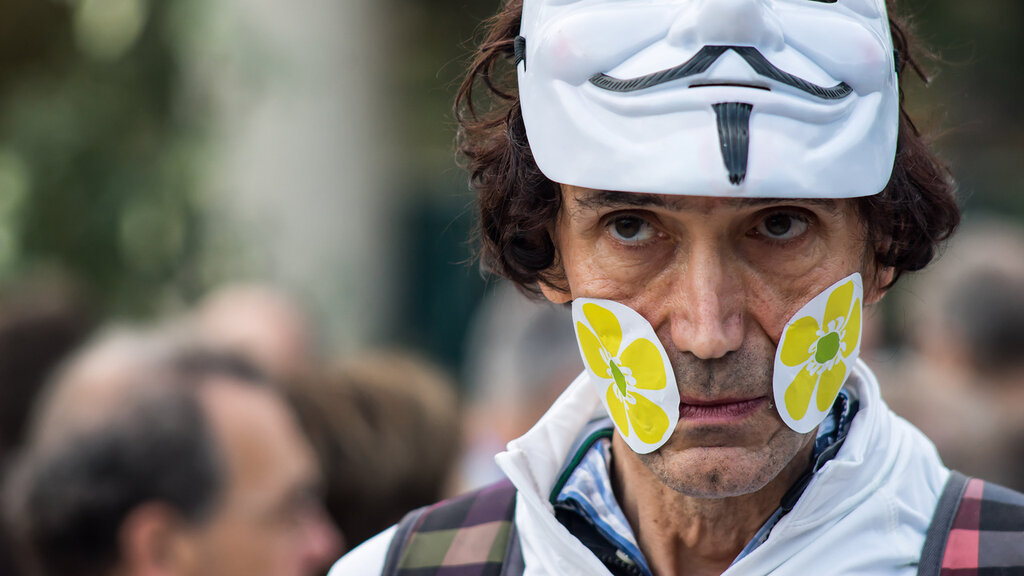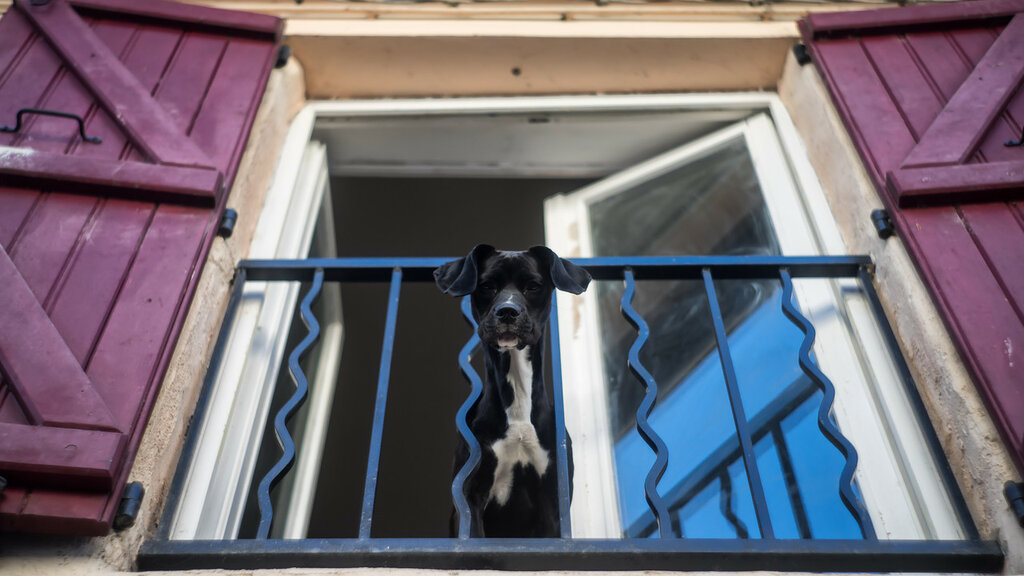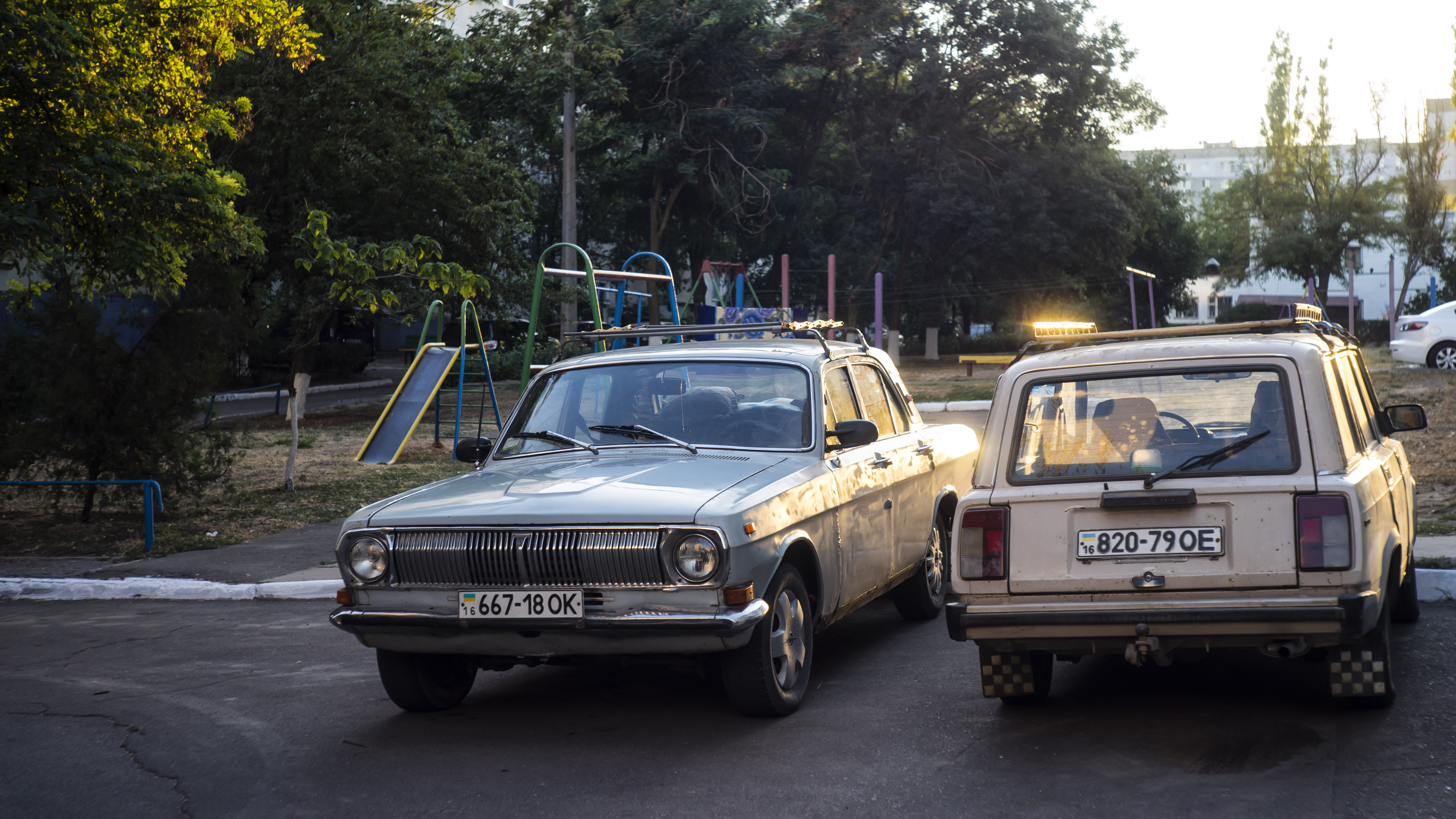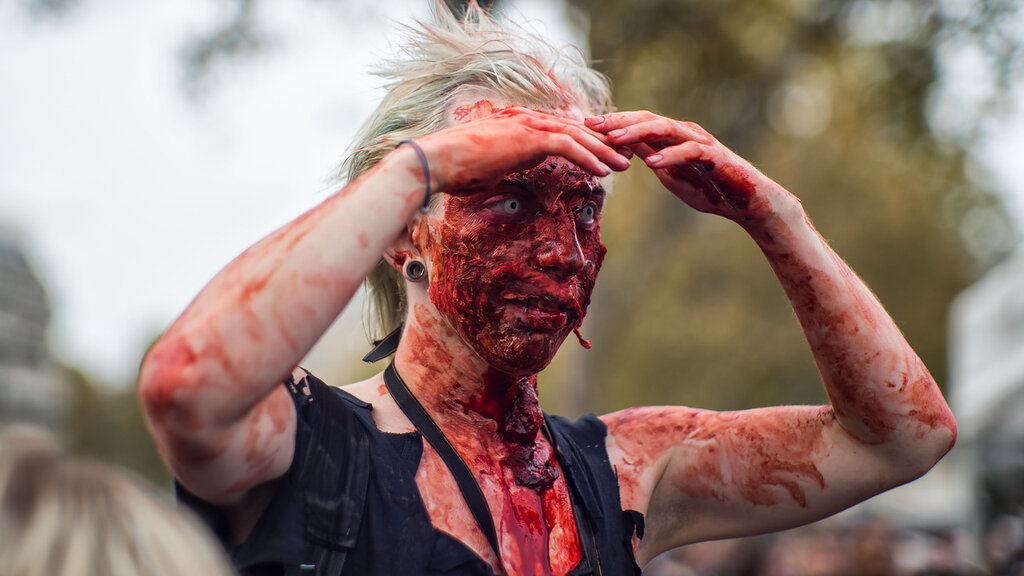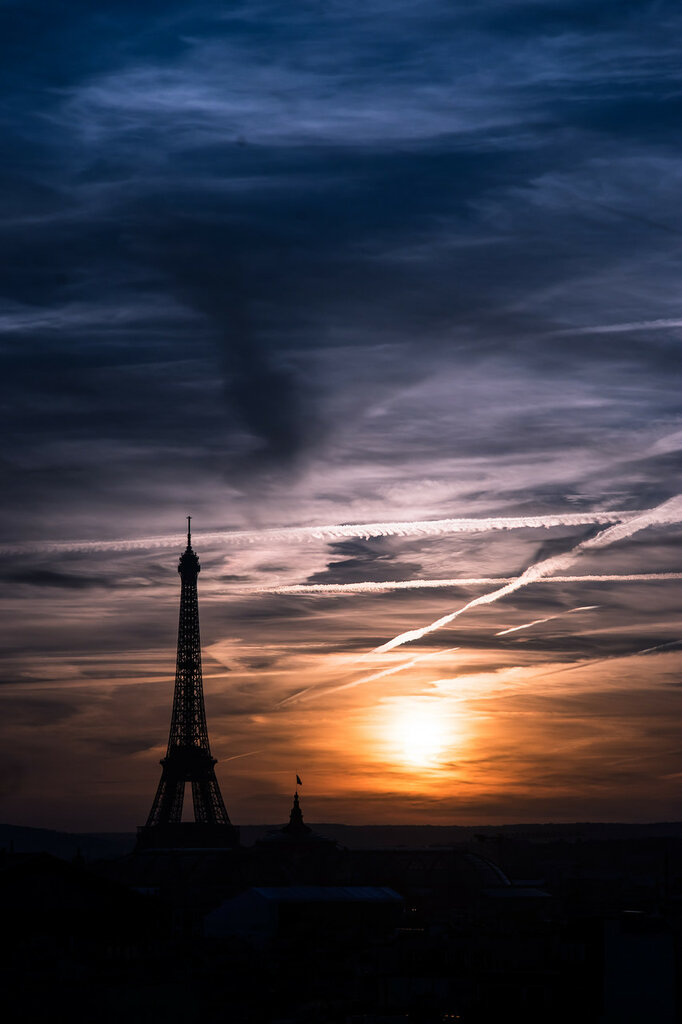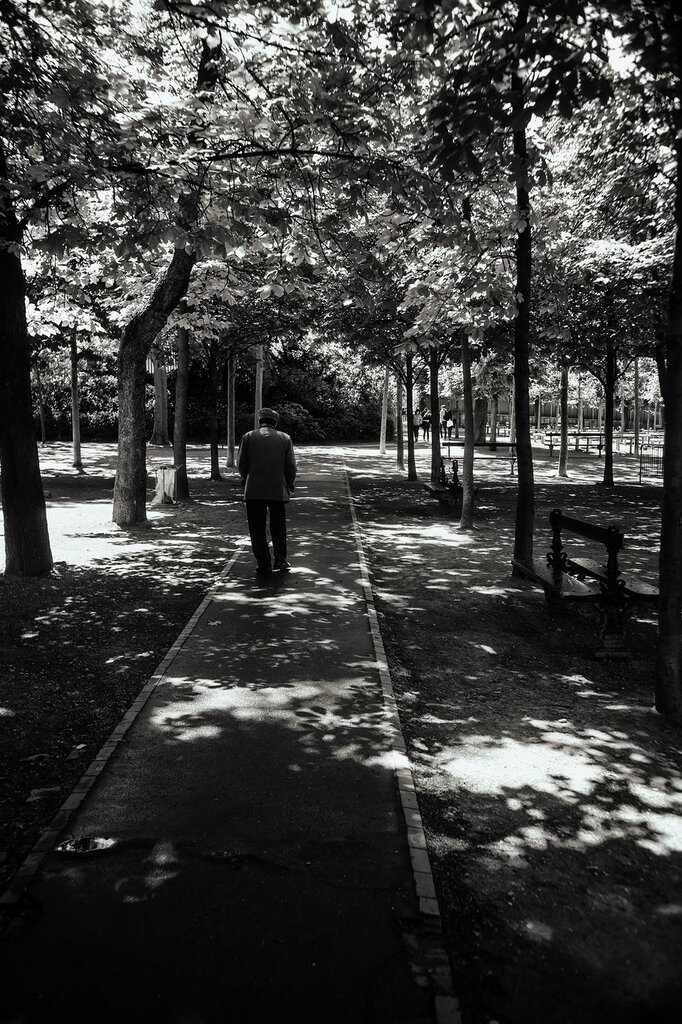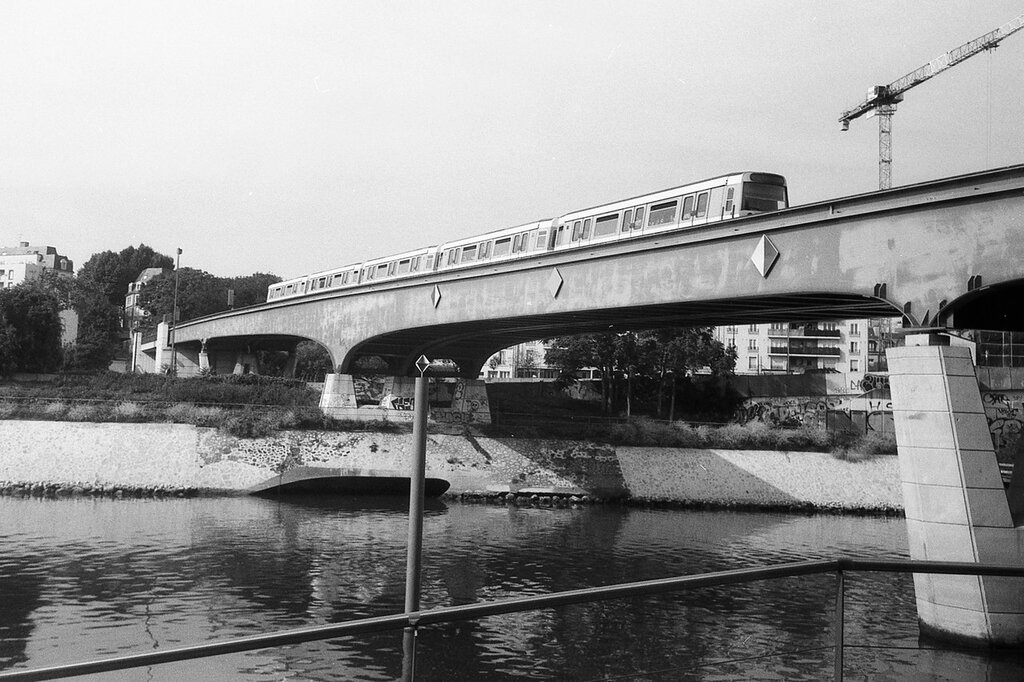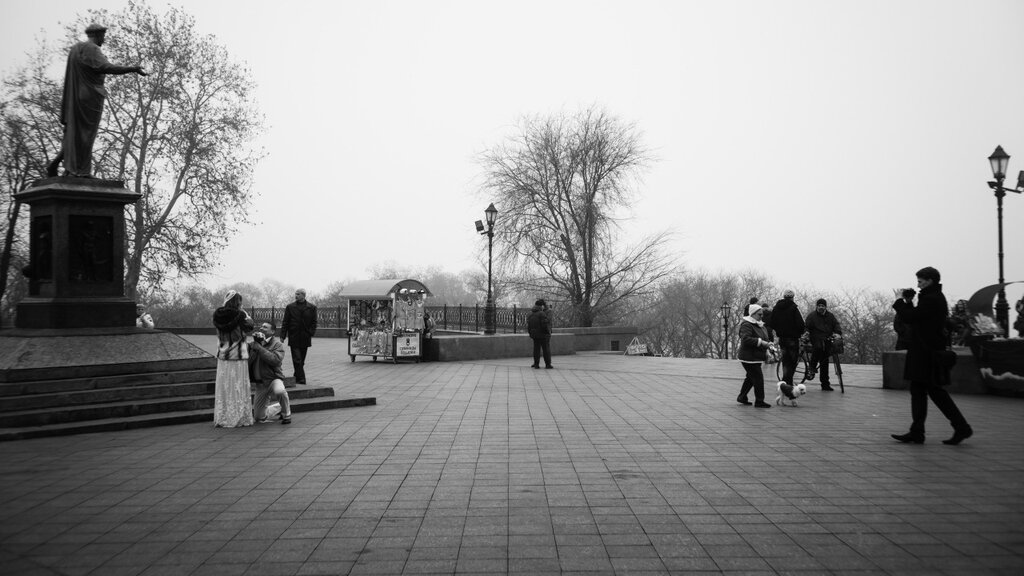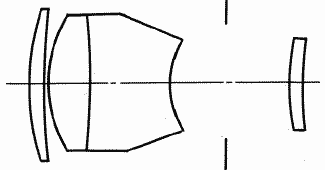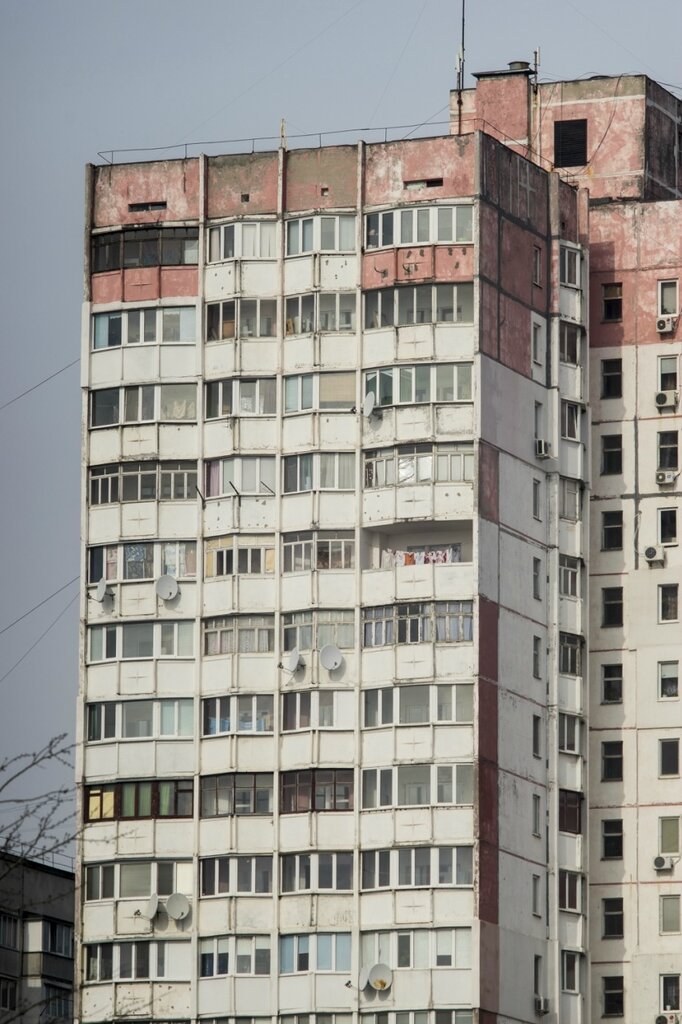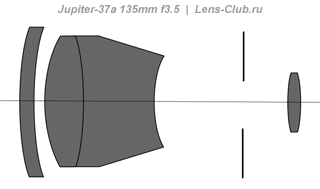J'ai pu passer ce samedi pour prendre quelques photos à ce festival situé à Thomery.
J'avais sur mon A7 :
KO-140M 140mm/1.8 : photos 2 à 10 puis 12 à 19.
Zenitar-K 16mm/2.8 : photos 11
Helios-40T 85mm/1.5 : photos 1, 20 à 24 puis 29 à 31.
Tair-51T 135mm/3 : photos 25 à 28 puis 32.
lundi 26 août 2019
lundi 19 août 2019
Reviews : Par Jupiter!
Aujourd'hui, j'ai décidé de faire une piqûre de rappel concernant les Jupiter.
Commençons d'abord par le commencement. Les Jupiter regroupent trois types de schéma optique.
On trouve les Jupiter grand-angle (non retro-focus). Il s'agit d'une formule de 6 éléments en 4 groupes (dont un gros élément arrière). Chez Zeiss, on retrouve une formule proche avec le Biogon d'avant-guerre. Voici la formule optique du Jupiter-12 35mm/2.8.
Today I decided to make a reminder about Jupiter lenses.
Let’s begin by the beginning : Jupiters are a family of three different types of optical formulas.
First, there are non-retrofocus wide angle lenses. they are 6/4 (6 glass elements in 4 groups) formulas, with a huge rear element. Carl Zeiss used a quite close formula with the pre-WW2 “Biogon”. Here’s the optical formula of the Jupiter-12 35mm F/2.8 :
Nous avons ensuite les Jupiter de focale normale (de 50mm à 135mm), qui ont pour point commun d'être composés de 3 groupes, le premier étant un élément seul, le deuxième un ensemble 3 éléments, et le troisième de 2 (Jupiter-8) ou 3 (Jupiter-3 et 9) éléments.
Exemple ici avec le Jupiter-9 85mm/2 :
Then, there are Jupiters of “normal” focal lenght (from 50mm to 135mm), which have in common to be made of 3 optical groups, the first one being a single glass element, the second a group of 3 elements and the third a group of 2 (Jupiter-8) or 3 (Jupiter-3 & 9) elements.
Sample here with the Jupiter-9 85mm F/2 :
Enfin, nous avons les optiques type télé-objectif à partir du 135mm. Ils se caractèrisent par un système en 3 groupes, avec une élément frontal, un groupe central composé de 2 (Jupiter-11...) ou 3 éléments (Jupiter-6...) et une lentille arrière assez fine. Voici le schéma optique du Jupiter-6 180mm/2.8 :
And Finally there are the “tele-lens” type of lens, starting from 135mm. They characterize themselves by a 3-group system, with a frontal element, a central group of 2 (Jupiter-11, 21, 37…) or 3 (Jupiter-6…) elements and a rather thin rear element. Here’s the optical formula of the Jupiter-6 180mm F/2.8 :
On peut donc voir que contrairement à d'autres noms (Uran, Vega...), le nom Jupiter ne détermine pas clairement une formule optique (c'est la même chose avec le Sonnar de chez Zeiss).
We can observe that, unlike other lineup’s names (Uran, Vega…), the name “Jupiter” do not necessarily determine a particular optical formula, just like the Sonnar lineup from Carl Zeiss.
Il fait partie de la série d'objectifs recalculés à partir des pièces de Zeiss récupérées en guise de réparation après la fin de la seconde guerre mondiale. Des verres Zeiss ont été utilisés jusqu'en 1951. On le trouve aussi sous l’appellation ZK pour les modèles assemblés avant 1950. Il existe en monture LTM pour Zorki/FED, et en monture Kiev pour la série de Kiev 1/2/3/4.
A pleine ouverture, avec un bon exemplaire, on a une image au piqué tout à fait satisfaisant. Malheureusement, le Jupiter-3 fait partie de ces objectifs soviétiques où la chance joue beaucoup dans l'obtention d'un "bon" exemplaire. Mon exemplaire de 1951 est très bien, alors que d'autres exemplaires plus récents donnaient des résultats à pleine ouverture très doux.
Le bokeh est toujours très doux, et son diaphragme à 13 lames permet de garder ce bokeh tout en fermant un peu. Il est bien entendu très compact, ce qui est très agréable pour l'utilisation.
Cela dit, c'est un objectif que j'utilise très rarement.
Quelques exemples sur A7 :
This one is a part of the lens set recalculated from pieces of Zeiss-s collected as a war reparation after the end of World War Two. Some Zeiss Glass were used until 1951. We can find this Jupiter under the (in)famous ZK name for the ones assembled before 1950. It exists in both LTM mount for Zorki & FEDs and in Kiev-Contax mount for the Kievs 1/2/3/4.
Wide open with a good copy, we can get a quite sharp image. Unfortunately, the Jupiter-3 is part of this set of soviet lenses where it’s a bit of a lottery concerning how good your copy is (blame quality control). My copy from 1951 is quite neat, whereas more recent copies gave very soft images wide open.
The bokeh is always very smooth, and its 13-blade iris allows it to keep this smoothness while stopping down a bit. It is indeed very compact, which is very pleasant when using it.
However,, it is one of these lenses I rarely use.
Some samples on my Sony A7 :
On passe à un autre calibre avec le Jupiter-6.
Let’s get to the bigger guns with the Jupiter-6.

Voici un de mes premiers "gros" objectifs que je me suis procuré, peu de temps après l'Helios-40. Il pèse 1.5kg, et ressemble à un gros bloc de métal. Ces grosses bagues ne sont pas très pratiques pour les petites mains (heureusement ce n'est pas mon cas), mais je le trouve assez agréable à utiliser. La mise au point est précise. La forme du diaphragme à mi-ouverture est très proche de celle du Helios-40 (en soleil). Il accepte les pare-soleils utilisés pour les MTO-500.
Niveau optique, il est vraiment bien,dès la pleine ouverture. Il souffre seulement d'aberrations chromatiques à f2.8, mais elles disparaissent assez rapidement en fermant un peu. A savoir qu'il couvre le 6x6, mais il n'a bizarrement jamais été produit pour Kiev-6 ou 88. On lui a préféré le Kaleinar-3 150mm/2.8.
Quelques exemples sur A7 :
This is one of the first “huge” lenses that I bought shortly after the Helios-40. It weighs around 1.5 kilograms (3.3 pounds) and resembles basically a big chunk of metal. These huge rings probably aren’t very convenient for small hand’s owners, hopefully I’m not one of them, but nonetheless I find it quite pleasant to use. Focus is accurate. Iris’s shape when wide open is very close to the Helios-40’s (under sunlight). You can use MTO-500’s sunshade on it.
Optically speaking, it is really good from wide open to diffraction. It only suffers from some chromatic aberrations @F/2.8 but they quickly disappear when stopping down. Note that it covers 6x6 format, but weirdly enough was never produced for Kiev-6 nor 88. Arsenal instead preferred him the Kaleinar-3 150mm F/2.8
Some samples on Sony A7 :
Sur 5D mk1
C'est l'objectif emblématique soviétique, avec le Helios-44. Produit à des millions d'exemplaires, il équipait les Zorki de la fin des années 40 (ZK) aux années 80 et a même été produit par KMZ jusque dans les années 90. Il a également été produit pour les Kiev de la série 1/2/3/4 mais aussi pour le Kiev-5 (Jupiter-8 NB). La version M voit son schéma optique légèrement modifiée (groupe arrière) à partir des années 60. Les soviétiques ont essayé de simplifier son schéma par soucis d'économie, avec le Jupiter-17 50mm/2, mais ce dernier ne fut jamais produit en série.
D'un point de vue optique, on ne peut pas lui reprocher grand chose. Mais bizarrement, je n'ai jamais vraiment accroché. J'ai toujours préféré d'autres 50mm, comme un Zenitar ou le 44 (58mm). Je trouve sans doute son rendu trop "normal" pour être intéressant. Du coup, je n'ai pas énormément d'exemples.
It is THE emblematic soviet lens, along with the Helios-44 of course. Millions of copies were produced, he equipped late 40’s Zorkis (Named ZK once again) until the 80’ and was even produced by KMZ until the 90’. It was also produced for Kievs 1/2/3/4 but also for the Kiev-5 (Jupiter-8 NB (for Новый Байонет, New Bayonet)). The M version’s formula has been slightly tweaked (rear group) during the 60’. The Soviets tried to simplify its formula for it to be less expensive with the Jupiter-17 50mm F/2, but this one never saw full scale production.
Optically speaking, It is quite irreproachable. But weirdly enough, I never really loved it. I always preferred other nifty fifties like a Zenitar or the Helios 44. I probably find its rendition too “normal” to be interesting ; so I don’t have many samples.
Voici une autre légende soviétique, surtout connue pour être l'un des objectifs à portrait les moins chers du marché (reste à savoir si c'est vraiment le cas...). Il a été produit à partir de la fin des années 40 (sous l'appellation ZK, rare) jusque dans les années 90.
Il a été produit en monture LTM, M42, Z39, Kiev, Automat, cinéma, technique...
Comme le Jupiter-8 ou 3, ont peut facilement tomber sur un "citron" comme tomber sur une pépite. Mon KMZ de 1960 est excellent, mon Automat de 86 est un peu en dessous.
Here’s yet another Soviet legend, especially known to be one of the least expensive “portrait lens” on the market (yet to know whether it is true or not…). It was produced from the late 40’s (under the very rare and (in)famous “ZK” designation) until the 90’. It was produced in LTM, M42, Z39, Kiev-Contax, Automat, Some cinema mounts, some technical mounts and whatnot mounts. Just like the Jupiter-8 or 3, you can easily find a bad copy, alike a true pearl. My KMZ from 1960 is excellent, my Automat from 1986 is a tad worse.
Il existe aussi un prototype pour Kiev 11 Automat, le Rekord-4 85/2
A prototype for Kiev 11 Automat, the Rekord-4 85mm F/2 also exists.
Quelques exemples sur A7 :
Some samples on Sony a7 :
J'ai l'impression de me répéter, mais voici une autre légende soviétique, connue pour proposer un excellent rapport qualité/prix. Contrairement aux Jupiter de moyenne focale, les téléobjectifs comme le Jupiter-11 sont beaucoup moins sujets aux problèmes de variation de la qualité. J'ai une bonne quantité de Jupiter-11, et ils sont tous presque identiques d'un point de vue qualité. On peut voir que le bloc central est simplifié par rapport à celui du Jupiter-6.
I feel like I’m repeating myself, but here’s another Soviet legend, known to provide an outstanding price value. Unlike the Jupiters of “normal” focal length, tele-lenses like the Jupiter-11 are way less vulnerable to quality variation issues. I have a fair bunch of Jupiter-11s, and they are all almost identical, IQ speaking. We can observe that the central bloc is simplified compared to the Jupiter-6’s.
Le Jupiter-11 n'a vraiment pas grand chose à se reprocher, son seul point faible étant une ouverture maximum assez faible (f4). Mais pour un 135mm, c'est bien assez pour isoler son sujet en portrait. Très peu d'aberrations, une bonne résolution, une résistance au flare honorable.
The Jupiter-11 is quite irreproachable as well, it's only weak spot being a quite dim maximum aperture (F/4) ; but for such a tele-lens, it is way enough to isolate one’s model when shooting portrait. Very few chromatic aberrations, a good image quality, a honorable resistance to flare.
Le Jupiter-12 est le seul Jupiter grand angle produit en série par les soviétiques. Il a été recalculé sur la base du Biogon d'avant-guerre de chez Zeiss. Pendant longtemps, il n'était pas utilisable sur appareil photo numérique, pour la simple et bonne raison que sa partie arrière buttait sur la structure des appareils hybride APS-C. Il faudra attendre l'arrivée du A7 pour l'utiliser.
Il existe en monture LTM et Kiev.
Comme tous les objectifs grand-angle non-retrofocus, il ne donne pas tout son potentiel sur les capteurs numériques, et souffre pas mal d'une perte de luminosité et de résolution sur les bords. Ce phénomène est totalement absent sur une pellicule.
Cela dit, il ne perd pas tout son intérêt sur numérique. Ce n'est certes pas un objectif à prendre pour du paysage, mais il devient intéressant pour la streetphoto (chose que je ne pratique pas).
The Jupiter-12 is the only wide angle Jupiter put into full scale production by the Soviets. It was recalculated from Zeiss’s pre-WW2 Biogon. For a long time, it was not (or on very few cameras) useable on DSL(R)s, since its rear part bumped onto the APS-C hybrids’s frame. We had to wait for cameras such as the Sony a7 to be able to use it. It exists in both LTM and Kiev-Contax mounts.
Alike all the non-retrofocus wide-angle lenses, he does not perform as well on a digital sensor as on a film plane, and suffers quite a bit from a luminosity and IQ loss on the borders, which issues are inexistent on film.
However, it does not loses all of its interest on DSL(R)s. It, indeed, is not a lens to be used to shoot landscapes, but is interesting to use when shooting street photography (something that I do not practice anyway).
Sur Zorki-4
Retour sur A7
Voici un objectif bien plus rare et spécial que les objectifs précédemment présentés. Il s'agit d'un objectif expérimental produit par KMZ au début des années 60 (il semble reprendre le concept du Zeiss Sonnar 125mm/1.5). La formule optique reprendrait celle du Jupiter-3, mais avec une focale plus longue (ce n'est donc pas un type téléobjectif). Il est lourd et encombrant. J'en possède deux, le second étant adapté "à la dur" au M42.
This lens is much more special and rare than the previously presented ones. It is an experimental lens produced by KMZ at the beginning of the 60’ (I believe it uses the same concept as the Zeiss Sonnar 125mm F/1.5). The optical formula could possibly be inspired from the Jupiter-3’s, but with a longer focal length (which is therefore not a tele-lens). It is heavy and cumbersome. I own two, the second being adapted “the hard way” to fit M42.
D'un point de vue optique, il est mou à pleine ouverture, avec pas mal de coma. Mais en fermant à f2, il devient bien plus attrayant.
Optically speaking, it is soft wide open, with a fair amount of coma. But when stopped down to F/2, it becomes much more interesting.
Quelques exemples à pleine ouverture sur A7 :
A f2 :
Retour à pleine ouverture :
Autre objectif très courant, mais un peu moins reconnu que le Jupiter-11, il s'agit d'un objectif qui a été conçu à l'âge d'or des optiques soviétiques (fin des années 50, début des années 60) mais sa production en série n'a commencé qu'en 1968 avec le Jupiter-21A (par KMZ), puis en grande série en 1972 avec le Jupiter21M (par KMZ d'abord, puis très rapidement transféré à VOMZ). Durant les années 60, les soviétiques n'avaient à leur catalogue que le peu lumineux Telemar-22 200/5.6, qui n'a pas eu beaucoup de succès. Je ne sais pas vraiment pourquoi la production a commencé si tard. Entre le moment de sa conception et la production du Jupiter-21A, le Jupiter-21T a été produit pour les cameras de télévision de type KT-27. A noter que le Jupiter-21 couvre le 6x6.
Yet another very common lens, but quite less known compared to the Jupiter-11. This lens was designed during the so called “Soviet lens Golden Age” (late 50’ to early 60’) but its production only began in 1968 with the Jupiter-21A by KMZ, then in full scale production in 1972 with the Jupiter 21M (At first produced by KMZ, but got quickly transferred to VOMZ). During the 60’, Soviets only had the dim Telemar-22 200mm F/5.6 in their catalog, which did not experienced the success intended. I don't really know why the production started so late. Between the moment it was designed and the production of the Jupiter-21A, the Jupiter-21T was put into production as well. It was intended to be used on KT-27-type TV cameras. Note that the Jupiter-21 covers 6x6.
C'est un très bon objectif, il est pour moi le Jupiter-11 du 200mm. Il n'est pas très lumineux (et encore, un 200/4 commence à être pas mal), mais il fait très bien son travail. Peu d'aberrations chromatiques, de bons micro-contrastes. Pour les petits-bras, il peut être un peu lourd. Le Jupiter-21A est réputé comme étant meilleur que le M, mais je ne l'ai jamais essayé, et je doute un peu.
It is a very good lens, it is in my opinion the 200mm equivalent of the Jupiter 11. It is not very bright (yet, a 200mm F/4 is pretty reasonable), but it does its job very well. Very little chromatic aberrations, good micro-contrasts. For the wimpiests it can be a tad heavy. The Jupiter-21A is said to be better than the M one, but I’ve never tried it myself, and I honestly doubt it. (Note from the translator : I tried both, and apart from the size, the mount and the flare resistance (blame the small metallic plate at the rear), it is exactly the same IQ.)
Quelques exemples sur A7 :
Sur Kiev-6S
Il s'agit d'un objectif pour les appareils moyens-formats soviétiques, à savoir les Kiev-88 (type Hasselblad 1600) (36V, ou В en cyrillique) et Kiev-6 (type Pentacon Six) (36B, ou Б en cyrillique). Ce n'est pas un objectif très populaire, mais il a pourtant des arguments intéressants. Il a une focale plus longue et une ouverture plus grande que le Jupiter-21, et il se trouve dans des prix assez identiques. Par contre, il est plus gros, moyen format oblige. Il est également moins bon en termes de micro-contraste. Sa grosse frontale attire pas mal de flare, ce qui fait baisser le contraste.
This is a lens created in order to be used on soviet medium-format cameras like Kiev-88s (V mount,or В in cyrillic, alike Hasselblad 1600’s F-mount) and Kiev-6 (B mount, or Б in cyrillic, type Pentacon-Six). It is not a very popular lens although it has some interesting arguments to it. It has a longer focal length and a wider aperture than the Jupiter-21, and can be found in quite similar prices. Though it is bigger, obviously since it is a medium format lens. It also gives less micro-contrast and its huge frontal lens causes a fair bit of flares, which furthermore diminishes the contrast.
Cela dit, il est assez plaisant à utiliser, sans pour autant être une bête de performance ou de praticité. Un objectif qui mérite une petite place dans votre collection de soviétiques.
However, it is quite pleasant to use even though it is not an IQ monster nor being very convenient. A lens that deserves a “small” place in your collection indeed.
Il s'agit de l'évolution du Jupiter-11. Il en reprend les principaux avantages (micro-contraste, disponibilité sur le marché), mais offre une ouverture à f3.5. Il ne fait pas non plus parti des Jupiter "loterie" (Jupiter-9 et 3), j'ai eu beaucoup de Jupiter-37 entre les mains, ils étaient tous, sans exception, très bons.
Il se décline en différentes variantes, mais toutes se valent en termes de qualité optique :
This is the evolution of the Jupiter-11. It has basically the same advantages (micro contrast, market availability) but offers a wider aperture, being F/3.5, which is half a stop brighter than its predecessor (F/4). It also is not part of the “lottery” Jupiters (Jupiter-9 & 3). I had plenty of Jupiter-37s between my hands, and they were all, without any exception, very good. It exists in different versions, but they are all pretty much the same IQ-wise (and body style-wise too actually) :
Jupiter-37A
Jupiter-37AM
MC Jupiter-37A
Jupiter-37A MC-N-30
Objectif assez rare (mais loin d'être introuvable), utilisé avec son grand-frère Jupiter-39 par la police de la route bielorusse sur l'appareil "Selena". Ils sont en monture M42 avec un tirage mécanique très proche du M42 pour photo. Ils sont donc facile à utiliser sur nos appareils modernes.
Ce sont tous les deux des objectifs de type téléobjectif, avec une frontale, une gros bloc central et une petite lentille arrière.
Ce sont de bons objectifs en soi, piqués, mais les aberrations chromatiques ne sont pas très bien corrigées à pleine ouverture. Et au final, ils ne sont pas très intéressant pour la photo. Un Jupiter-9 de bonne facture sera égal ou meilleur que ce Jupiter-38 à f4. Même chose avec le Jupiter-39, qui sera surpassé par un Jupiter-37 à ouverture égale.
Je les considère donc surtout comme des optiques pour la collection.
A quite rare lens (but nowhere close to be unfindable) that was used with its “big brother” Jupiter-39 by the Belarusian road police on the “Selena” camera. They fit M42 even though the flange distance is not exactly the same. They are therefore very easy to use on our modern cameras.They are both tele-lenses, with a frontal lens, a large central block and a rather small rear element.
They are in and of itself good, sharp lenses, but the chromatic aberrations really are not so well corrected, especially wide open ; and they actually aren’t very interesting to shoot. A good Jupiter-9 would be equal if not better that this Jupiter-38 at F/4. Same thing with the Jupiter-39, which will be outmatched by a Jupiter-37 at equal aperture ; So I mostly consider them as pieces of my collection.
Voir "Jupiter-38 75mm/4"
Related to the previous paragraph ; see “Jupiter-38 75mm/4” up above.
Voici un Jupiter produit uniquement pour une camera de télévision (KT-27). C'est assez étrange, car il se trouve être un bon objectif, et les soviétiques n'avaient pas de bon objectif 100mm pour appareil photo pendant longtemps (jusqu'à l'arrivée du Kaleinar-5N pour monture Nikon à la fin des années 70). Il y avait bien l'Industar-24M, mais ce fut un échec aussi bien commercial que technique. Il s'agit sans doute d'une question de coût de construction. Il possède un schéma proche du Jupiter-9.
D'un point de vue optique, il est assez doux à pleine ouverture, mais il a tout de même assez de micro-contraste pour du portrait. De plus, il est bien corrigé au niveau des aberrations. Il est également assez compact. Vraiment dommage qu'il n'ait pas été produit à plus grande échelle pour un appareil amateur, et distribué sur le réseau habituel.
Here’s a Jupiter that was only produced for one single television camera (KT-27). It is quite strange indeed since it is actually a pretty good lens, and the soviets did not had any good 100mm for photography cameras during a long time (until the Kaleinar-5N came, but only Nikon mount, and during the late 70’). There was indeed the Industar-24M, but it was a total failure, both technically and commercially speaking. It is undoubtedly a production cost matter. Its formula is close to the one of the Jupiter-9.
Optically speaking, it is quite soft wide open, but even though, it still has enough micro-contrast for portrait. Moreover, it is very well corrected, chromatic aberrations-wise. It is also fairly compact. Truly a shame that it was never produced at a wider scale for amateur cameras and distributed on the usual market...
La liste de ces Jupiter n'est bien entendu pas exhaustive, il s'agit des Jupiter que j'ai en ma possession. D'autres existent...
Jupiter-17 50mm/2 (prototype, version simplifiée du Jupiter-8) :http://www.sovietcams.com/index.php?1785417265
Jupiter-16 50mm/2 (prototype) : http://www.sovietcams.com/index.php?1110498044
Jupiter-23 85mm/2 (prototype GOI) : http://www.photohistory.ru/index.php?pid=1243092052310297
Jupiter-24-1 12.5/1.9 (objectif pour camera 16mm Kvartz-2M) : http://lens-club.ru/lenses/item/c_7976.html
Jupiter-25Ts 85mm/2.8 (pour Zenit-4/5/6) : http://www.photohistory.ru/index.php?pid=1207248189179555
Jupiter-30 85mm/2 (prototype GOI) : http://www.photohistory.ru/1265699541589327.html
This list is of course not exhaustive, it is only about the Jupiters I had the chance to use myself ; other ones exists...
Jupiter-17 50mm/2 (prototype, simplified version of the Jupiter-8) :http://www.sovietcams.com/index.php?1785417265
Jupiter-16 50mm/2 (prototype) : http://www.sovietcams.com/index.php?1110498044
Jupiter-23 85mm/2 (prototype GOI (Gosudarstvennyy opticheskiy institut
, State Optical Institute)) : http://www.photohistory.ru/index.php?pid=1243092052310297
Jupiter-24-1 12.5/1.9 (16mm Kvartz-2M lens) : http://lens-club.ru/lenses/item/c_7976.html
Jupiter-25Ts 85mm/2.8 (For Zenit-4/5/6) : http://www.photohistory.ru/index.php?pid=1207248189179555
Jupiter-30 85mm/2 (prototype GOI(see above)) : http://www.photohistory.ru/1265699541589327.html
Translated by Red Turian, great thanks to him!!!
Commençons d'abord par le commencement. Les Jupiter regroupent trois types de schéma optique.
On trouve les Jupiter grand-angle (non retro-focus). Il s'agit d'une formule de 6 éléments en 4 groupes (dont un gros élément arrière). Chez Zeiss, on retrouve une formule proche avec le Biogon d'avant-guerre. Voici la formule optique du Jupiter-12 35mm/2.8.
Today I decided to make a reminder about Jupiter lenses.
Let’s begin by the beginning : Jupiters are a family of three different types of optical formulas.
First, there are non-retrofocus wide angle lenses. they are 6/4 (6 glass elements in 4 groups) formulas, with a huge rear element. Carl Zeiss used a quite close formula with the pre-WW2 “Biogon”. Here’s the optical formula of the Jupiter-12 35mm F/2.8 :
Nous avons ensuite les Jupiter de focale normale (de 50mm à 135mm), qui ont pour point commun d'être composés de 3 groupes, le premier étant un élément seul, le deuxième un ensemble 3 éléments, et le troisième de 2 (Jupiter-8) ou 3 (Jupiter-3 et 9) éléments.
Exemple ici avec le Jupiter-9 85mm/2 :
Then, there are Jupiters of “normal” focal lenght (from 50mm to 135mm), which have in common to be made of 3 optical groups, the first one being a single glass element, the second a group of 3 elements and the third a group of 2 (Jupiter-8) or 3 (Jupiter-3 & 9) elements.
Sample here with the Jupiter-9 85mm F/2 :
Enfin, nous avons les optiques type télé-objectif à partir du 135mm. Ils se caractèrisent par un système en 3 groupes, avec une élément frontal, un groupe central composé de 2 (Jupiter-11...) ou 3 éléments (Jupiter-6...) et une lentille arrière assez fine. Voici le schéma optique du Jupiter-6 180mm/2.8 :
And Finally there are the “tele-lens” type of lens, starting from 135mm. They characterize themselves by a 3-group system, with a frontal element, a central group of 2 (Jupiter-11, 21, 37…) or 3 (Jupiter-6…) elements and a rather thin rear element. Here’s the optical formula of the Jupiter-6 180mm F/2.8 :
On peut donc voir que contrairement à d'autres noms (Uran, Vega...), le nom Jupiter ne détermine pas clairement une formule optique (c'est la même chose avec le Sonnar de chez Zeiss).
We can observe that, unlike other lineup’s names (Uran, Vega…), the name “Jupiter” do not necessarily determine a particular optical formula, just like the Sonnar lineup from Carl Zeiss.
Jupiter3 50mm/1.5
Il fait partie de la série d'objectifs recalculés à partir des pièces de Zeiss récupérées en guise de réparation après la fin de la seconde guerre mondiale. Des verres Zeiss ont été utilisés jusqu'en 1951. On le trouve aussi sous l’appellation ZK pour les modèles assemblés avant 1950. Il existe en monture LTM pour Zorki/FED, et en monture Kiev pour la série de Kiev 1/2/3/4.
A pleine ouverture, avec un bon exemplaire, on a une image au piqué tout à fait satisfaisant. Malheureusement, le Jupiter-3 fait partie de ces objectifs soviétiques où la chance joue beaucoup dans l'obtention d'un "bon" exemplaire. Mon exemplaire de 1951 est très bien, alors que d'autres exemplaires plus récents donnaient des résultats à pleine ouverture très doux.
Le bokeh est toujours très doux, et son diaphragme à 13 lames permet de garder ce bokeh tout en fermant un peu. Il est bien entendu très compact, ce qui est très agréable pour l'utilisation.
Cela dit, c'est un objectif que j'utilise très rarement.
Quelques exemples sur A7 :
This one is a part of the lens set recalculated from pieces of Zeiss-s collected as a war reparation after the end of World War Two. Some Zeiss Glass were used until 1951. We can find this Jupiter under the (in)famous ZK name for the ones assembled before 1950. It exists in both LTM mount for Zorki & FEDs and in Kiev-Contax mount for the Kievs 1/2/3/4.
Wide open with a good copy, we can get a quite sharp image. Unfortunately, the Jupiter-3 is part of this set of soviet lenses where it’s a bit of a lottery concerning how good your copy is (blame quality control). My copy from 1951 is quite neat, whereas more recent copies gave very soft images wide open.
The bokeh is always very smooth, and its 13-blade iris allows it to keep this smoothness while stopping down a bit. It is indeed very compact, which is very pleasant when using it.
However,, it is one of these lenses I rarely use.
Some samples on my Sony A7 :
Jupiter-6 180mm/2.8
On passe à un autre calibre avec le Jupiter-6.
Let’s get to the bigger guns with the Jupiter-6.

Voici un de mes premiers "gros" objectifs que je me suis procuré, peu de temps après l'Helios-40. Il pèse 1.5kg, et ressemble à un gros bloc de métal. Ces grosses bagues ne sont pas très pratiques pour les petites mains (heureusement ce n'est pas mon cas), mais je le trouve assez agréable à utiliser. La mise au point est précise. La forme du diaphragme à mi-ouverture est très proche de celle du Helios-40 (en soleil). Il accepte les pare-soleils utilisés pour les MTO-500.
Niveau optique, il est vraiment bien,dès la pleine ouverture. Il souffre seulement d'aberrations chromatiques à f2.8, mais elles disparaissent assez rapidement en fermant un peu. A savoir qu'il couvre le 6x6, mais il n'a bizarrement jamais été produit pour Kiev-6 ou 88. On lui a préféré le Kaleinar-3 150mm/2.8.
Quelques exemples sur A7 :
This is one of the first “huge” lenses that I bought shortly after the Helios-40. It weighs around 1.5 kilograms (3.3 pounds) and resembles basically a big chunk of metal. These huge rings probably aren’t very convenient for small hand’s owners, hopefully I’m not one of them, but nonetheless I find it quite pleasant to use. Focus is accurate. Iris’s shape when wide open is very close to the Helios-40’s (under sunlight). You can use MTO-500’s sunshade on it.
Optically speaking, it is really good from wide open to diffraction. It only suffers from some chromatic aberrations @F/2.8 but they quickly disappear when stopping down. Note that it covers 6x6 format, but weirdly enough was never produced for Kiev-6 nor 88. Arsenal instead preferred him the Kaleinar-3 150mm F/2.8
Some samples on Sony A7 :
Sur 5D mk1
Jupiter-8 50mm/2
 |
| Jupiter-8 (source : zenitcamera.com) |
 |
| Jupiter-8M (source : zenitcamera.com) |
C'est l'objectif emblématique soviétique, avec le Helios-44. Produit à des millions d'exemplaires, il équipait les Zorki de la fin des années 40 (ZK) aux années 80 et a même été produit par KMZ jusque dans les années 90. Il a également été produit pour les Kiev de la série 1/2/3/4 mais aussi pour le Kiev-5 (Jupiter-8 NB). La version M voit son schéma optique légèrement modifiée (groupe arrière) à partir des années 60. Les soviétiques ont essayé de simplifier son schéma par soucis d'économie, avec le Jupiter-17 50mm/2, mais ce dernier ne fut jamais produit en série.
D'un point de vue optique, on ne peut pas lui reprocher grand chose. Mais bizarrement, je n'ai jamais vraiment accroché. J'ai toujours préféré d'autres 50mm, comme un Zenitar ou le 44 (58mm). Je trouve sans doute son rendu trop "normal" pour être intéressant. Du coup, je n'ai pas énormément d'exemples.
It is THE emblematic soviet lens, along with the Helios-44 of course. Millions of copies were produced, he equipped late 40’s Zorkis (Named ZK once again) until the 80’ and was even produced by KMZ until the 90’. It was also produced for Kievs 1/2/3/4 but also for the Kiev-5 (Jupiter-8 NB (for Новый Байонет, New Bayonet)). The M version’s formula has been slightly tweaked (rear group) during the 60’. The Soviets tried to simplify its formula for it to be less expensive with the Jupiter-17 50mm F/2, but this one never saw full scale production.
Optically speaking, It is quite irreproachable. But weirdly enough, I never really loved it. I always preferred other nifty fifties like a Zenitar or the Helios 44. I probably find its rendition too “normal” to be interesting ; so I don’t have many samples.
Jupiter-9 85mm/2
Voici une autre légende soviétique, surtout connue pour être l'un des objectifs à portrait les moins chers du marché (reste à savoir si c'est vraiment le cas...). Il a été produit à partir de la fin des années 40 (sous l'appellation ZK, rare) jusque dans les années 90.
Il a été produit en monture LTM, M42, Z39, Kiev, Automat, cinéma, technique...
Comme le Jupiter-8 ou 3, ont peut facilement tomber sur un "citron" comme tomber sur une pépite. Mon KMZ de 1960 est excellent, mon Automat de 86 est un peu en dessous.
Here’s yet another Soviet legend, especially known to be one of the least expensive “portrait lens” on the market (yet to know whether it is true or not…). It was produced from the late 40’s (under the very rare and (in)famous “ZK” designation) until the 90’. It was produced in LTM, M42, Z39, Kiev-Contax, Automat, Some cinema mounts, some technical mounts and whatnot mounts. Just like the Jupiter-8 or 3, you can easily find a bad copy, alike a true pearl. My KMZ from 1960 is excellent, my Automat from 1986 is a tad worse.
Il existe aussi un prototype pour Kiev 11 Automat, le Rekord-4 85/2
A prototype for Kiev 11 Automat, the Rekord-4 85mm F/2 also exists.
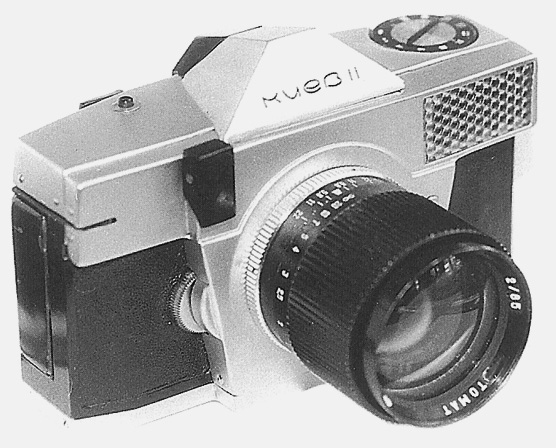 |
| Source : photohistory.ru |
Quelques exemples sur A7 :
Some samples on Sony a7 :
Jupiter-11 135mm/4
 |
| Source : zenitcamera.com |
J'ai l'impression de me répéter, mais voici une autre légende soviétique, connue pour proposer un excellent rapport qualité/prix. Contrairement aux Jupiter de moyenne focale, les téléobjectifs comme le Jupiter-11 sont beaucoup moins sujets aux problèmes de variation de la qualité. J'ai une bonne quantité de Jupiter-11, et ils sont tous presque identiques d'un point de vue qualité. On peut voir que le bloc central est simplifié par rapport à celui du Jupiter-6.
I feel like I’m repeating myself, but here’s another Soviet legend, known to provide an outstanding price value. Unlike the Jupiters of “normal” focal length, tele-lenses like the Jupiter-11 are way less vulnerable to quality variation issues. I have a fair bunch of Jupiter-11s, and they are all almost identical, IQ speaking. We can observe that the central bloc is simplified compared to the Jupiter-6’s.
Le Jupiter-11 n'a vraiment pas grand chose à se reprocher, son seul point faible étant une ouverture maximum assez faible (f4). Mais pour un 135mm, c'est bien assez pour isoler son sujet en portrait. Très peu d'aberrations, une bonne résolution, une résistance au flare honorable.
The Jupiter-11 is quite irreproachable as well, it's only weak spot being a quite dim maximum aperture (F/4) ; but for such a tele-lens, it is way enough to isolate one’s model when shooting portrait. Very few chromatic aberrations, a good image quality, a honorable resistance to flare.
Jupiter-12 35mm/2.8
Le Jupiter-12 est le seul Jupiter grand angle produit en série par les soviétiques. Il a été recalculé sur la base du Biogon d'avant-guerre de chez Zeiss. Pendant longtemps, il n'était pas utilisable sur appareil photo numérique, pour la simple et bonne raison que sa partie arrière buttait sur la structure des appareils hybride APS-C. Il faudra attendre l'arrivée du A7 pour l'utiliser.
Il existe en monture LTM et Kiev.
Comme tous les objectifs grand-angle non-retrofocus, il ne donne pas tout son potentiel sur les capteurs numériques, et souffre pas mal d'une perte de luminosité et de résolution sur les bords. Ce phénomène est totalement absent sur une pellicule.
Cela dit, il ne perd pas tout son intérêt sur numérique. Ce n'est certes pas un objectif à prendre pour du paysage, mais il devient intéressant pour la streetphoto (chose que je ne pratique pas).
The Jupiter-12 is the only wide angle Jupiter put into full scale production by the Soviets. It was recalculated from Zeiss’s pre-WW2 Biogon. For a long time, it was not (or on very few cameras) useable on DSL(R)s, since its rear part bumped onto the APS-C hybrids’s frame. We had to wait for cameras such as the Sony a7 to be able to use it. It exists in both LTM and Kiev-Contax mounts.
Alike all the non-retrofocus wide-angle lenses, he does not perform as well on a digital sensor as on a film plane, and suffers quite a bit from a luminosity and IQ loss on the borders, which issues are inexistent on film.
However, it does not loses all of its interest on DSL(R)s. It, indeed, is not a lens to be used to shoot landscapes, but is interesting to use when shooting street photography (something that I do not practice anyway).
Sur Zorki-4
Retour sur A7
Jupiter-13 125mm/1.5
Voici un objectif bien plus rare et spécial que les objectifs précédemment présentés. Il s'agit d'un objectif expérimental produit par KMZ au début des années 60 (il semble reprendre le concept du Zeiss Sonnar 125mm/1.5). La formule optique reprendrait celle du Jupiter-3, mais avec une focale plus longue (ce n'est donc pas un type téléobjectif). Il est lourd et encombrant. J'en possède deux, le second étant adapté "à la dur" au M42.
This lens is much more special and rare than the previously presented ones. It is an experimental lens produced by KMZ at the beginning of the 60’ (I believe it uses the same concept as the Zeiss Sonnar 125mm F/1.5). The optical formula could possibly be inspired from the Jupiter-3’s, but with a longer focal length (which is therefore not a tele-lens). It is heavy and cumbersome. I own two, the second being adapted “the hard way” to fit M42.
D'un point de vue optique, il est mou à pleine ouverture, avec pas mal de coma. Mais en fermant à f2, il devient bien plus attrayant.
Optically speaking, it is soft wide open, with a fair amount of coma. But when stopped down to F/2, it becomes much more interesting.
Quelques exemples à pleine ouverture sur A7 :
A f2 :
Retour à pleine ouverture :
Jupiter-21 200mm/4
Autre objectif très courant, mais un peu moins reconnu que le Jupiter-11, il s'agit d'un objectif qui a été conçu à l'âge d'or des optiques soviétiques (fin des années 50, début des années 60) mais sa production en série n'a commencé qu'en 1968 avec le Jupiter-21A (par KMZ), puis en grande série en 1972 avec le Jupiter21M (par KMZ d'abord, puis très rapidement transféré à VOMZ). Durant les années 60, les soviétiques n'avaient à leur catalogue que le peu lumineux Telemar-22 200/5.6, qui n'a pas eu beaucoup de succès. Je ne sais pas vraiment pourquoi la production a commencé si tard. Entre le moment de sa conception et la production du Jupiter-21A, le Jupiter-21T a été produit pour les cameras de télévision de type KT-27. A noter que le Jupiter-21 couvre le 6x6.
Yet another very common lens, but quite less known compared to the Jupiter-11. This lens was designed during the so called “Soviet lens Golden Age” (late 50’ to early 60’) but its production only began in 1968 with the Jupiter-21A by KMZ, then in full scale production in 1972 with the Jupiter 21M (At first produced by KMZ, but got quickly transferred to VOMZ). During the 60’, Soviets only had the dim Telemar-22 200mm F/5.6 in their catalog, which did not experienced the success intended. I don't really know why the production started so late. Between the moment it was designed and the production of the Jupiter-21A, the Jupiter-21T was put into production as well. It was intended to be used on KT-27-type TV cameras. Note that the Jupiter-21 covers 6x6.
C'est un très bon objectif, il est pour moi le Jupiter-11 du 200mm. Il n'est pas très lumineux (et encore, un 200/4 commence à être pas mal), mais il fait très bien son travail. Peu d'aberrations chromatiques, de bons micro-contrastes. Pour les petits-bras, il peut être un peu lourd. Le Jupiter-21A est réputé comme étant meilleur que le M, mais je ne l'ai jamais essayé, et je doute un peu.
It is a very good lens, it is in my opinion the 200mm equivalent of the Jupiter 11. It is not very bright (yet, a 200mm F/4 is pretty reasonable), but it does its job very well. Very little chromatic aberrations, good micro-contrasts. For the wimpiests it can be a tad heavy. The Jupiter-21A is said to be better than the M one, but I’ve never tried it myself, and I honestly doubt it. (Note from the translator : I tried both, and apart from the size, the mount and the flare resistance (blame the small metallic plate at the rear), it is exactly the same IQ.)
Quelques exemples sur A7 :
Sur Kiev-6S
Jupiter-36 250mm/3.5
Il s'agit d'un objectif pour les appareils moyens-formats soviétiques, à savoir les Kiev-88 (type Hasselblad 1600) (36V, ou В en cyrillique) et Kiev-6 (type Pentacon Six) (36B, ou Б en cyrillique). Ce n'est pas un objectif très populaire, mais il a pourtant des arguments intéressants. Il a une focale plus longue et une ouverture plus grande que le Jupiter-21, et il se trouve dans des prix assez identiques. Par contre, il est plus gros, moyen format oblige. Il est également moins bon en termes de micro-contraste. Sa grosse frontale attire pas mal de flare, ce qui fait baisser le contraste.
This is a lens created in order to be used on soviet medium-format cameras like Kiev-88s (V mount,or В in cyrillic, alike Hasselblad 1600’s F-mount) and Kiev-6 (B mount, or Б in cyrillic, type Pentacon-Six). It is not a very popular lens although it has some interesting arguments to it. It has a longer focal length and a wider aperture than the Jupiter-21, and can be found in quite similar prices. Though it is bigger, obviously since it is a medium format lens. It also gives less micro-contrast and its huge frontal lens causes a fair bit of flares, which furthermore diminishes the contrast.
Cela dit, il est assez plaisant à utiliser, sans pour autant être une bête de performance ou de praticité. Un objectif qui mérite une petite place dans votre collection de soviétiques.
However, it is quite pleasant to use even though it is not an IQ monster nor being very convenient. A lens that deserves a “small” place in your collection indeed.
Jupiter-37 135mm/3.5
Il s'agit de l'évolution du Jupiter-11. Il en reprend les principaux avantages (micro-contraste, disponibilité sur le marché), mais offre une ouverture à f3.5. Il ne fait pas non plus parti des Jupiter "loterie" (Jupiter-9 et 3), j'ai eu beaucoup de Jupiter-37 entre les mains, ils étaient tous, sans exception, très bons.
Il se décline en différentes variantes, mais toutes se valent en termes de qualité optique :
This is the evolution of the Jupiter-11. It has basically the same advantages (micro contrast, market availability) but offers a wider aperture, being F/3.5, which is half a stop brighter than its predecessor (F/4). It also is not part of the “lottery” Jupiters (Jupiter-9 & 3). I had plenty of Jupiter-37s between my hands, and they were all, without any exception, very good. It exists in different versions, but they are all pretty much the same IQ-wise (and body style-wise too actually) :
Jupiter-37A
Jupiter-37AM
MC Jupiter-37A
Jupiter-37A MC-N-30
Jupiter-38 75mm/4
Objectif assez rare (mais loin d'être introuvable), utilisé avec son grand-frère Jupiter-39 par la police de la route bielorusse sur l'appareil "Selena". Ils sont en monture M42 avec un tirage mécanique très proche du M42 pour photo. Ils sont donc facile à utiliser sur nos appareils modernes.
Ce sont tous les deux des objectifs de type téléobjectif, avec une frontale, une gros bloc central et une petite lentille arrière.
Ce sont de bons objectifs en soi, piqués, mais les aberrations chromatiques ne sont pas très bien corrigées à pleine ouverture. Et au final, ils ne sont pas très intéressant pour la photo. Un Jupiter-9 de bonne facture sera égal ou meilleur que ce Jupiter-38 à f4. Même chose avec le Jupiter-39, qui sera surpassé par un Jupiter-37 à ouverture égale.
Je les considère donc surtout comme des optiques pour la collection.
A quite rare lens (but nowhere close to be unfindable) that was used with its “big brother” Jupiter-39 by the Belarusian road police on the “Selena” camera. They fit M42 even though the flange distance is not exactly the same. They are therefore very easy to use on our modern cameras.They are both tele-lenses, with a frontal lens, a large central block and a rather small rear element.
They are in and of itself good, sharp lenses, but the chromatic aberrations really are not so well corrected, especially wide open ; and they actually aren’t very interesting to shoot. A good Jupiter-9 would be equal if not better that this Jupiter-38 at F/4. Same thing with the Jupiter-39, which will be outmatched by a Jupiter-37 at equal aperture ; So I mostly consider them as pieces of my collection.
Jupiter-39 135mm/5.6
Voir "Jupiter-38 75mm/4"
Related to the previous paragraph ; see “Jupiter-38 75mm/4” up above.
Jupiter-100T 100mm/2.5
Voici un Jupiter produit uniquement pour une camera de télévision (KT-27). C'est assez étrange, car il se trouve être un bon objectif, et les soviétiques n'avaient pas de bon objectif 100mm pour appareil photo pendant longtemps (jusqu'à l'arrivée du Kaleinar-5N pour monture Nikon à la fin des années 70). Il y avait bien l'Industar-24M, mais ce fut un échec aussi bien commercial que technique. Il s'agit sans doute d'une question de coût de construction. Il possède un schéma proche du Jupiter-9.
D'un point de vue optique, il est assez doux à pleine ouverture, mais il a tout de même assez de micro-contraste pour du portrait. De plus, il est bien corrigé au niveau des aberrations. Il est également assez compact. Vraiment dommage qu'il n'ait pas été produit à plus grande échelle pour un appareil amateur, et distribué sur le réseau habituel.
Here’s a Jupiter that was only produced for one single television camera (KT-27). It is quite strange indeed since it is actually a pretty good lens, and the soviets did not had any good 100mm for photography cameras during a long time (until the Kaleinar-5N came, but only Nikon mount, and during the late 70’). There was indeed the Industar-24M, but it was a total failure, both technically and commercially speaking. It is undoubtedly a production cost matter. Its formula is close to the one of the Jupiter-9.
Optically speaking, it is quite soft wide open, but even though, it still has enough micro-contrast for portrait. Moreover, it is very well corrected, chromatic aberrations-wise. It is also fairly compact. Truly a shame that it was never produced at a wider scale for amateur cameras and distributed on the usual market...
La liste de ces Jupiter n'est bien entendu pas exhaustive, il s'agit des Jupiter que j'ai en ma possession. D'autres existent...
Jupiter-17 50mm/2 (prototype, version simplifiée du Jupiter-8) :http://www.sovietcams.com/index.php?1785417265
Jupiter-16 50mm/2 (prototype) : http://www.sovietcams.com/index.php?1110498044
Jupiter-23 85mm/2 (prototype GOI) : http://www.photohistory.ru/index.php?pid=1243092052310297
Jupiter-24-1 12.5/1.9 (objectif pour camera 16mm Kvartz-2M) : http://lens-club.ru/lenses/item/c_7976.html
Jupiter-25Ts 85mm/2.8 (pour Zenit-4/5/6) : http://www.photohistory.ru/index.php?pid=1207248189179555
Jupiter-30 85mm/2 (prototype GOI) : http://www.photohistory.ru/1265699541589327.html
This list is of course not exhaustive, it is only about the Jupiters I had the chance to use myself ; other ones exists...
Jupiter-17 50mm/2 (prototype, simplified version of the Jupiter-8) :http://www.sovietcams.com/index.php?1785417265
Jupiter-16 50mm/2 (prototype) : http://www.sovietcams.com/index.php?1110498044
Jupiter-23 85mm/2 (prototype GOI (Gosudarstvennyy opticheskiy institut
, State Optical Institute)) : http://www.photohistory.ru/index.php?pid=1243092052310297
Jupiter-24-1 12.5/1.9 (16mm Kvartz-2M lens) : http://lens-club.ru/lenses/item/c_7976.html
Jupiter-25Ts 85mm/2.8 (For Zenit-4/5/6) : http://www.photohistory.ru/index.php?pid=1207248189179555
Jupiter-30 85mm/2 (prototype GOI(see above)) : http://www.photohistory.ru/1265699541589327.html
Translated by Red Turian, great thanks to him!!!
Inscription à :
Articles (Atom)















































